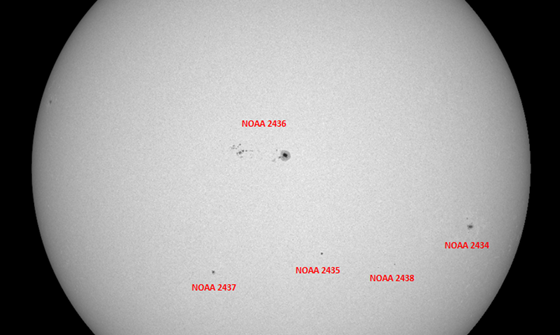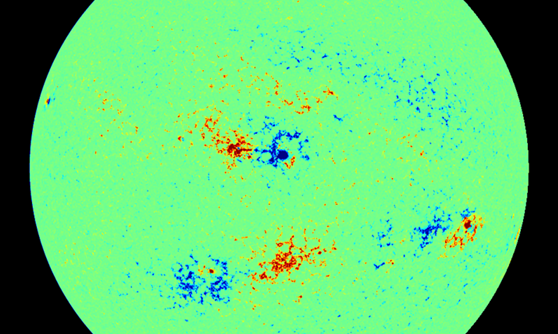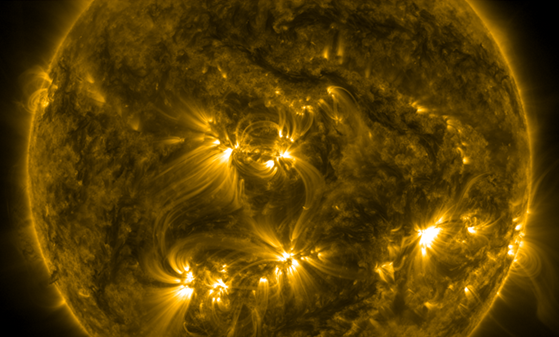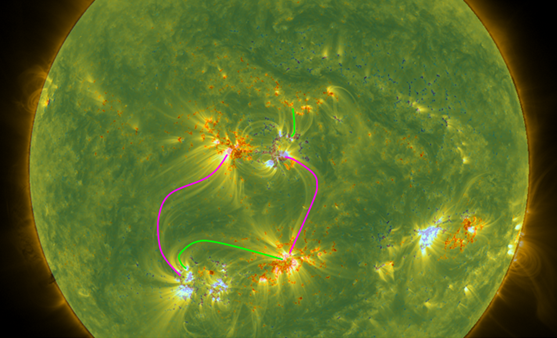No, this news item is not going to make publicity for a social network!... Instead, it will simply take a closer look at some sunspot groups that at first sight seem to be clearly separated, but upon examination of their magnetic field configurations, are connected to each other after all.
The picture underneath shows the Sun in white light on 23 October around 04:30UT, as imaged by SDO. The NOAA number of each sunspot group has been indicated, with NOAA 2436 the most prominent region. The other groups of interest are quite simple and are located on the southern solar hemisphere.

The magnetogram underneath shows that the magnetic fields are concentrated where there are sunpots, and quite dispersed in the other areas, i.e. in the spotless parts of the groups and outside the active regions. A reddish color means that the magnetic field lines are coming out of the solar surface (positive), whereas the bluish colors indicate field lines returning into the solar surface. It's a fun exercise to find the magnetic patches that correspond to the sunspots visible in white light.

SDO's view in extreme ultraviolet (EUV; AIA 171 filter at temperatures around 700.000 degrees) reveals dramatic differences compared to white light. The EUV-image shows several bright patches, which do not always coincide with the location of the sunspots. This is in particular true for the groups on the southern hemisphere. There are also a large number of closed coronal loops visible, connecting patches of opposite magnetic polarity. These loops are indeed nothing else than magnetic flux tubes containing trapped "hot" charged particles and reaching all the way into the corona, the Sun's hot outer atmosphere. It's the presence of these particles that gives us an idea of the magnetic structure in the Sun's atmosphere. These coronal loops are quite common, and one can see for example a few loops between the leading and trailing portion of NOAA 2436 on the northern solar hemisphere.

Amazingly, NOAA 2436 seems actually to be connected via coronal loops to NOAA 2437 and NOAA 2435 on the southern hemisphere, as indicated in pink on the combined magnetogram/AIA 171-image underneath. Moreover, the spotless trailing portion of NOAA 2437 is also connected to the leading portion of NOAA 2435 (annotated in green). The leading portion of NOAA 2436 is connected to opposite polarity patches to the north. This all makes the EUV (coronal) image a lot more complex than what one might have expected after a first look at the white light image. These "trans-equatorial" loops are no short-lived features, but were already present when the series of sunspot groups was rounding the east limb about a week earlier. At that time, they could be observed as delicate arches spanning the solar equator and connecting the two solar hemispheres with each other.

 |
 |





